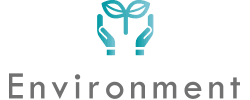Safety Initiatives
Safety and Health Policy
Based on the corporate philosophy of “respecting people,”
we are actively promoting health and safety activities to protect the lives and health of workers with a strong resolve to “prioritize safety in all aspects.”
The Sankyu Group aims to be a company that places importance on people with all of its strength. The foundation of this is that all employees and everyone in their families feel happy, and we believe that “safety” is the requirement that should be given the greatest priority for this.
For this reason, it is important to have the constant awareness that our workplace “is never safe and there is a constant danger”
as indicated in the Safety and Health Policy, and also maintain an awareness of problems,
with everyone working as one to reflect ideas and ways to eliminate danger in the workplace.
Furthermore, we will create an organization that truly “places importance on people” by developing personnel able to conduct such safety activities and safety management,
and inheriting this safety culture.

Sankyu’s Safety Initiatives
Establishment of safety and health management system
In 1971, we established the Safety Management Regulations specifying the company-wide safety and health management system, and the entire company is engaged in these activities.
Organizational chart of the company-wide
security management system

PDCA cycle

Introduction of the
“Sankyu occupational Safety and Health Management System”
We have formulated the “Sankyu occupational Safety and Health Management System (SSMS)”
based on the OSHMS(※1) formulated by the Ministry of Health, Labour and Welfare, and introduced it company-wide in 2003.
When introducing the system, we incorporated newly organized activities in addition to the activities
that had been conducted in the past, and rebuilt organized safety management activities.
- ● Continuation of previous activities
- Previous activities such as
- 5S (seiri [organization], seiton [tidiness], seiso [cleaning], seiketsu [cleanliness], shitsuke [discipline]) activities,
- danger prediction activities,
- near-miss proposals,
- danger experience drills,
- training to increase safety management capabilities have been incorporated into the system (SSMS) as “opportunities for improvement.”
- ● Newly organized activities
- The small-group safety activities that had previously been conducted as routine safety activities in the past
have been advanced in an organized and systematic manner, and incorporated into the main activities of the system (SSMS) as “Shokuba Risk Assessment (SRA(※2))” for identifying and eliminating danger and hazards in the workplace.
- ※1) Abbreviation of “Occupational Safety and Health Management System.”
OSHMS Guidelines (Ministry of Labour Notification No. 53, 1999) was issued by the Ministry of Health, Labour and Welfare.
(OSHMS Guideline) is provided by the Ministry of Health, Labor and Welfare. - ※2) Abbreviation of “Shokuba Risk Assessment” meaning “Workplace Risk Assessment.”
Announcement of “Safety and Health Policy”
When introducing the “Sankyu occupational Safety and Health Management System,”
the President announced the Safety and Health Policy.
Safety and health management initiatives
that “leave no one behind”
The Sankyu Group has expanded business overseas since the 1970s and now reaches 14 countries and regions.
In order to promote a safe and secure labor environment for local workers in overseas local subsidiaries to implement the SDGs adopted by United Nations Sustainable Development Summit 2015,
we are actively engaged in various training and the promotion of multicultural safety and health management.
Furthermore, training centers have been established in Malaysia (2021) and the Kingdom of Saudi Arabia (from 2022),
and we will begin education and training of employees of overseas local subsidiaries on site.

ISO & OHSAS training

Training for executive employees of a local subsidiary

Training (Oman)
Promotion of 12th Safety & Health Management Plan
The Safety & Health Management Plan that was made to be for three years in 1988 is now being implemented in its 12th iteration.
Various examples of safety activities
- ● Safety and health education
- Systematic and planned educations are conducted for each of the key organizations and each tier of employees
who are students. In addition to teaching employees knowledge and skills on safety and health, we stipulate rules
for implementing education to raise awareness. Furthermore, we are making a transition to education to online systems as a new form of education during the spread of COVID-19.
- ● Promotion of safety education using VR
- We implement effective safety education leading to
the development of “resilience” as an ability to increase sensitivity to hazards and avoid danger through the simulated experiences of individuals in addition to
existing education using paper and shared screens.
In future, this system will be multilingual and used in overseas local subsidiaries.
Narration and other applications are being replaced by machine voice for publication.
- ● Introduction of system for detecting health problems
- We promote the active introduction of systems utilizing ICT to detect health problems
mainly on work sites in order to quickly detect and swiftly respond to the risk of working
in hot conditions, changes in physical condition, signs of falling over or falling down, etc. and deviations from normal vital data.
- ● SRA company-wide presentation
- This is held for the purpose of introducing and applying excellent improvements to other departments and raising awareness of encouraging activities.

Employees receiving training

Crane work competition
- ● Sankyu Group Forklift Safe Driving Skill Competition
- This competition is held for the purpose of increasing the reliability of inspections
before commencing work, the spirit of legal compliance and operating skills related to driving.
In future, the doors will be opened to overseas local subsidiaries to expand into a global competition.

Employees receiving training

Crane work competition

Crane work competition
Occurrence of Workplace Accidents
The frequency and severity of the occurrence of workplace accidents are shown in the graphs.
These are compared with values for all industries nationwide.

※ “Frequency” refers to the number of deaths or injuries caused by workplace accidents per million working hours,
indicating the frequency of the occurrence of accidents. “Severity” refers to the total number of days of labor lost per 1,000 working hours,
indicating the degree of severity of accidents.




